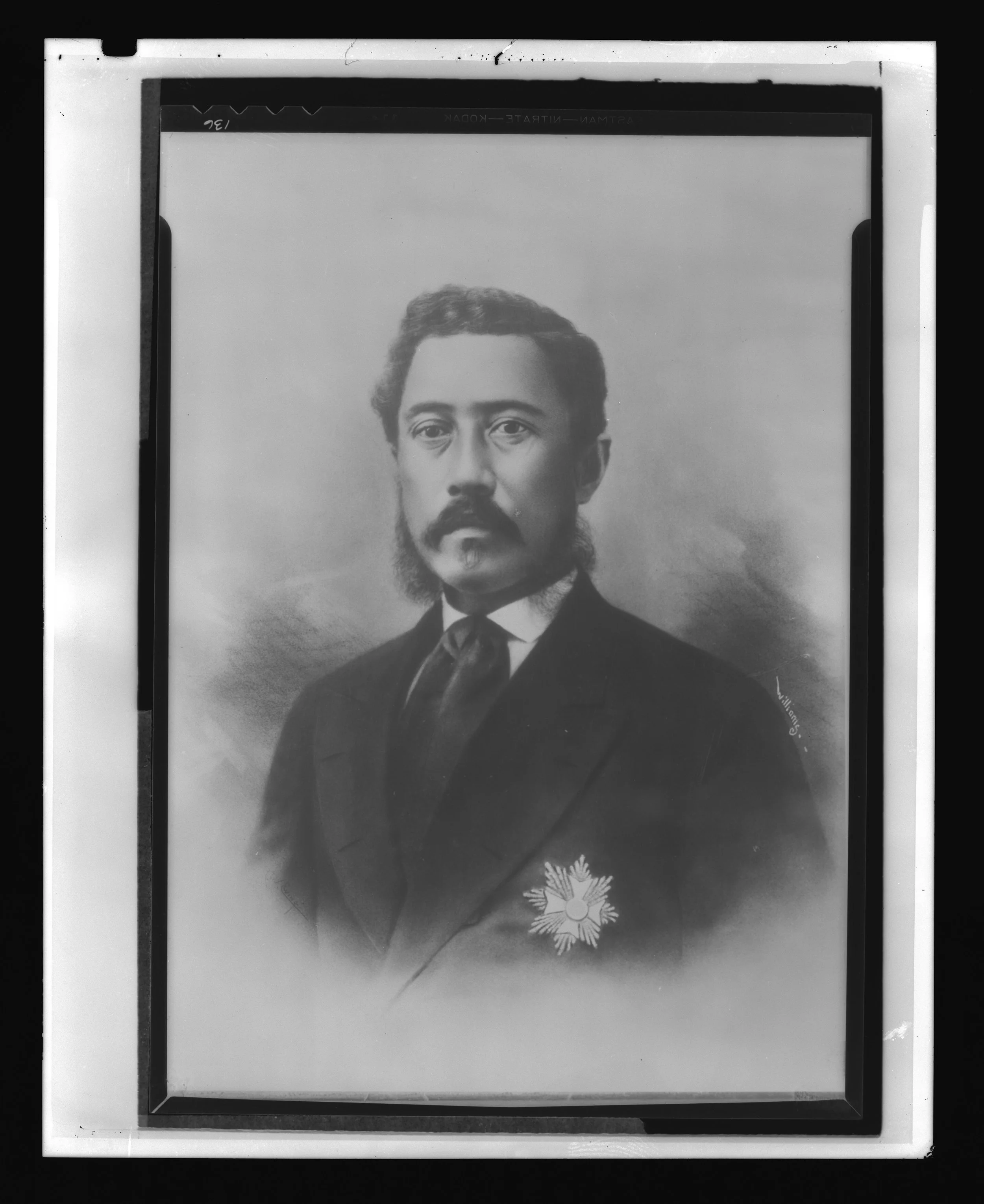
Life of Lunalilo
Early Life and Lineage
Prince William Charles Lunalilo was born on January 31, 1835 to High Chiefess Miriam ʻAuhea Kekāuluohi (Kuhina Nui, or Premier of the Hawaiian Kingdom and niece of Kamehameha I) and High Chief Charles Kanaʻina. Lunalilo’s grandparents were Kalaʻimamahū (half brother of Kamehameha I) and Kalākua (sister to Kaʻahumanu). His great grandfather was Keōuakupupāikalaninui (father of Kamehameha I).
Education and Upbringing
Lunalilo was one of the youngest students to enroll in the Chief's Children's School and was educated there throughout his childhood. He was known for his scholarly ability, poetic talents, and amazing memory for details. From a very young age, he loved to write, and his favorite subjects in school were literature and music.
He was known for his sense of justice, his compassion and his kindness toward others. These traits were recognized by the age of six in the unselfish and caring manner in which he interacted with his servants and fellow pupils.
Public Service and Support
In the Hawaiʻi Constitutional Convention of 1864, Lunalilo strongly supported the cause of the people against unnecessary interference by any ruler and also the proposal for a more democratic government with two houses of the legislature, a House of Nobles and a House of Representatives. He wanted a constitution that favored the people and gave less power to the king.
As a young man, he was courteous and intelligent, generous and friendly. His close friends affectionately called him “Prince Bill.” His native people called him “Lokomaikaʻi”, meaning “generous” or “benevolent.” He also gained popularity through his talent as a composer and writer. He wrote the lyrics for Hawaiʻi's first national anthem, E Ola ke Aliʻi ke Akua, or “God Save the King.”
Election to the Throne
When King Kamehameha V died on December 11, 1872 he had not named an heir. Even though the constitution gave the Legislature the power to choose, Lunalilo single-handedly brought about a plebiscite, an opportunity for the people to vote on who should be monarch, which was held on New Year's Day. Prince David Kalākaua ran against Lunalilo. The people on every island chose Lunalilo to be King; he won 99.6% of all votes cast.
At noon on January 8, 1873, the Legislature met, as required by law, in the Courthouse to cast their ballots to elect the next King. Lunalilo received all 37 votes. The coronation of Lunalilo took place at Kawaiahaʻo Church in a simple ceremony on January 9, 1873.
He was and will always be known as The People’s King!
Reign as King
Lunalilo began his reign on January 9, 1873, and immediately prioritized constitutional reform, seeking to restore power to the Legislature and promote a more democratic government. He opposed the importation of contract labor, voicing concerns about its impact on Native Hawaiians.
His reign also emphasized civil liberties and government accountability. Although his time as king was brief, ending with his death in February 1874, Lunalilo set a precedent for leadership rooted in transparency and the will of the people.
Death and Burial
Lunalilo died on February 3, 1874, at the age of 39, after battling tuberculosis. He reigned for a total of one year and 25 days.
The Royal Mausoleum served as the temporary resting place for Lunalilo's remains. By birthright, his remains could have remained there with those of the other monarchs; however, his desire was to be among his people. In 1875, his remains were moved to their permanent resting place in a tomb built for him and his father, Kanaʻina, on the grounds of Kawaiahaʻo Church.
Legacy and Lunalilo Trust
In his last will and testament, which he executed more than a year before the events that led to his ascension to the throne, Lunalilo directed that his large landholdings estate be used to establish a home for Native Hawaiians in need, giving preference to the elderly (kūpuna). This led to the creation of the Lunalilo Trust and the opening of Lunalilo Home in 1883, nine years after his death.
As the first elder care institution in Hawaiʻi, Lunalilo Home continues to honor his vision by providing compassionate care for kūpuna. His legacy lives on through this enduring act of aloha and service.








